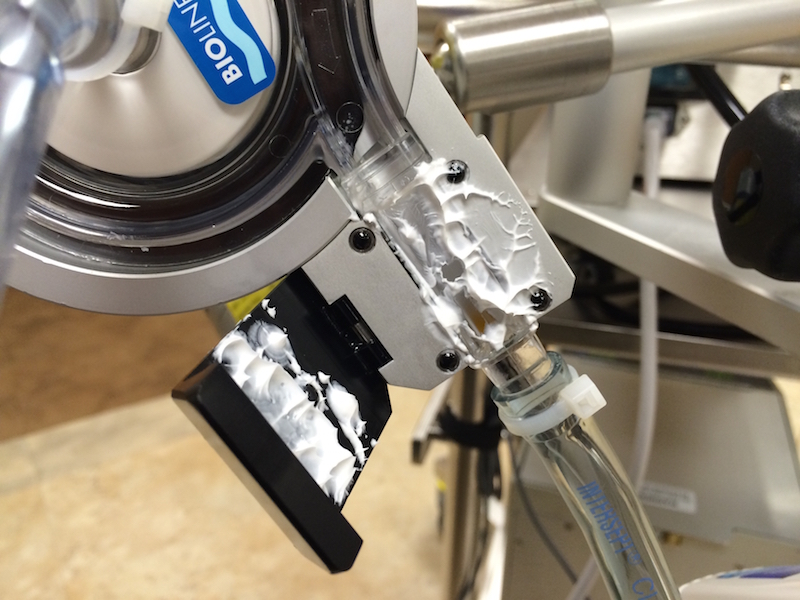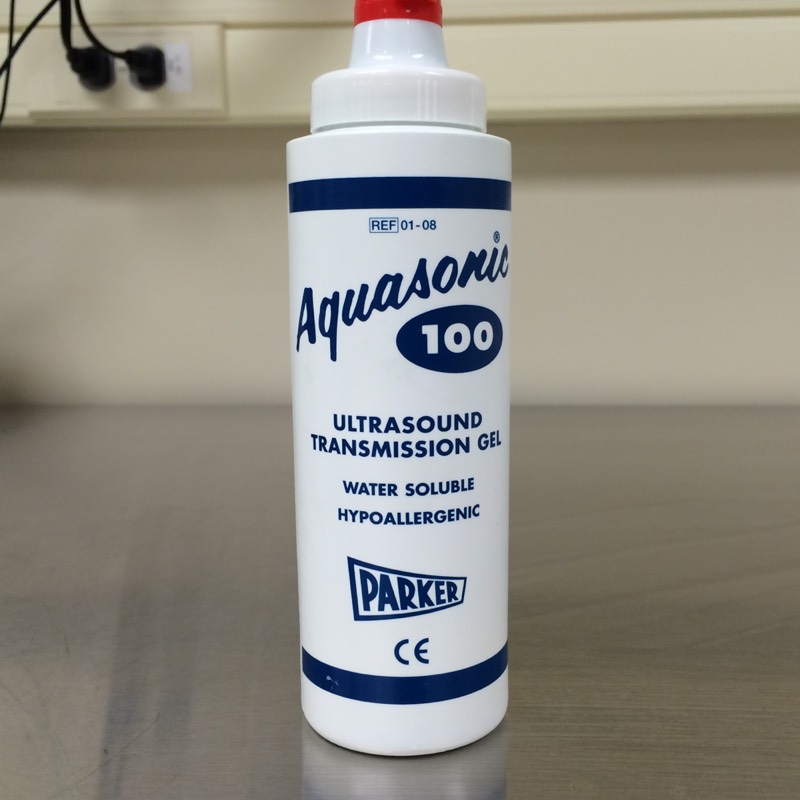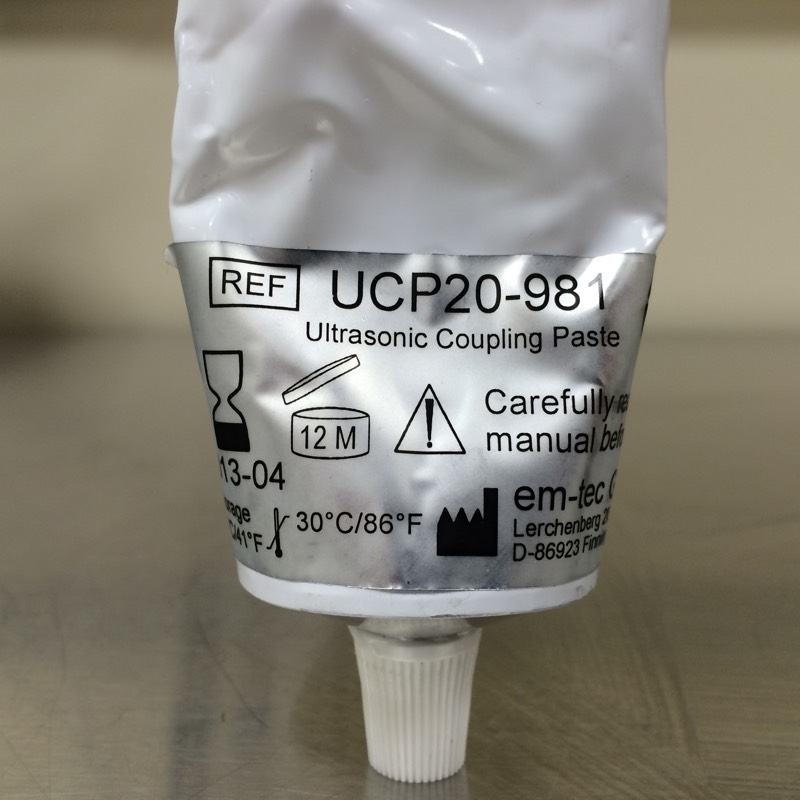Knowledge of the blood flow in the ECMO circuit is critical for managing the patient safely. If the circuit is driven by a positive displacement pump, the blood flow rates are determined solely by the pump. However, with centrifugal flow pumps, the flow rate is dependent not only on the pump rotational speed, but also upstream and downstream pressures. In this case, ultrasonic flow transducers provide are able accurate measurements on circuit blood flow.
With the Maquet ROTAFLOW Centrifugal Pump, the flow sensor is located on the downstream side of the pump. It clamps over the circuit tubing going to the oxygenator.

The ECMO ultrasound flow sensors require a conductive interface between the sensor and the circuit. This is usually a gel or paste. Important properties for the include:
- Highly conductive at frequencies used by the flow sensor
- Non-marring
- Does not dry out
- Easy to remove
- Non toxic
The most popular ultrasound gel found in emergency departments and intensive care units is Parker Labs Aquasonic. It is made of a combinations of propylene glycol, glycerine, perfume, dyes, phenoxyethanol or carbopol R 940 polymer along with lots of water. While it is useful to use for ultrasound exams, when exposed to air it dries out quickly which interferes with the flow sensor operation.

A better product to use is Em-tec Ultrasonic Coupling Paste. It is designed specifically for flow sensors. It remains pliable and does not dry out when exposed to air. This allows accurate performance of the flow sensor for weeks.

Contribute your thoughts.